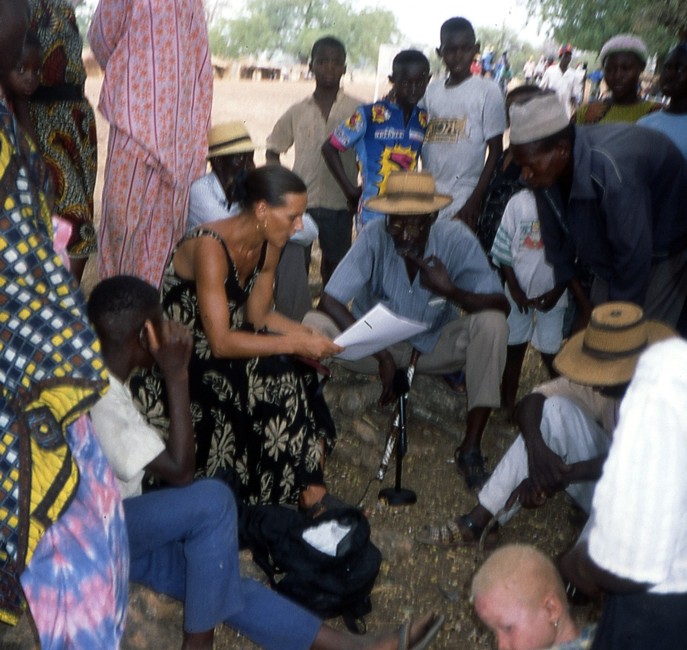Dr. Anne Schwarz (Berlin)
Aspekte der Morphosyntax and Tonologie im Buli
Mit Schwerpunkt auf dem Buli von Wiaga
(Aspects of Morphosyntax and Tonology in Buli with special consideration of the Buli of Wiaga)
On October 25th, 2004 Anne Schwarz submitted her thesis to the Faculty of Philosophy of the
Humboldt-University Berlin in partial fulfilment of the requirements for the degree of Doctor of
Philosophy (Dr. phil). Her thesis has been published on the internet and can be downloaded:
http://edoc.hu-berlin.de/dissertationen/schwarz-anne-2005-06-27/PDF/schwarz.pdf
Earlier treatises on Buli Grammar were written by Lucien Melançon et.al. (in French, unpublished Ms), Robert and Nancy Schaefer (1989, unpublished Ms.), Franz Kröger (1992, as an introduction to the Buli-English Dictionary), Todd Poulter (1989, Buli phonology),George Akanlig-Pare (1988, 1994, 1996, 1997, 1999, 2002, 2003, mostly on Buli phonology), Ken Hiraiwa (2003), Ora Matushansky (2003), Michael Kenstowicz et al. (1988, 2003) and Anne Schwarz (M.A. Thesis 1995, papers: 1999, 2000, 2003). Although we wish to leave any detailed criticism and appreciation of the new doctoral thesis to more competent reviewers, this treatise is certainly the most comprehensive and detailed work on Buli grammar.
We invite interested and competent linguists to write a review for BULUK. (fk)

Abstract:
This work deals with different aspects of the morphosyntax and tonology in Buli, a Gur
language of the Niger-Congo-Phylum, which is spoken in Ghana (Upper East Region near the
border to Burkina Faso) and has so far been described insufficiently. The grammatical
description provides an extensive insight into the linguistic system of Buli and contains chapters
concerning the following topics: phonology, noun class system, pronominal system, complex
noun phrases and nominal syntagmata, and verb system.
It is primarily based on the Buli variant spoken in Wiaga and supplemented by reference to other dialects as well as to related Gur languages, for instance with regard to tonal divergencies in noun class suffixes and in associative constructions. Following an autosegmental model, the tonal study does not aim at theoretic enhancement, but results directly from the need of an adequate description of the synchronic language in which tone plays an important role in lexicon and grammar.
Besides regular Tone-Sandhi (Low tone spreading), interesting phenomena at the phonology/syntax interface as well as at the phonology/semantics-pragmatics interface were observed -- e.g. some verb forms displaying tonal agreement with the discourse role of the subject (+/- discourse participant, i.e. 1st / 2nd vs. 3rd person) or the appearance of a boundary tone on utterance-final morphemes, including the noun class suffixes of indefinite nouns and the enclitic object pronouns at the verb. In the course of the morphosyntactic analysis, a typologically remarkable nominal compound type was identified that is distinguished by structural features as well as by specific possessive semantics and can be assumed to be involved in the development of attributive (qualifying) adjectives and one of two numerals with the meaning 'one'.